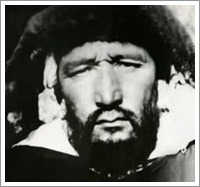David Brophy
Seymour Hersh’s latest piece on Syria seems to contain quite a few questionable claims, but I was most curious about what he says about the two “rat lines” funnelling Uyghur jihadists from Xinjiang into Syria via Turkey, one running through Southeast Asia, the other through Central Asia. Among other pieces of evidence that he provides for this claim, Hersh writes that: “IHS-Jane’s Defence Weekly estimated in October that as many as five thousand Uighur would-be fighters have arrived in Turkey since 2013, with perhaps two thousand moving on to Syria.”
Even by the standards of punditry on the Xinjiang – Syria connection, this figure of five thousand struck me as high. And what is a “would-be fighter” anyway? How do you distinguish a “would-be fighter” from the rest of the “wouldn’t-be fighters” among the Uyghurs living in Turkey? Apparently the border between Turkey and Syria isn’t particularly hard to get across. If they “would be” fighters, what’s stopping them?
I have an institutional subscription to all of the IHS-Jane’s publications, including Defence Weekly, so I scoured their website for Hersh’s source, but couldn’t find anything that fit the bill. When I posted a query about this to colleagues in the Xinjiang field, a contact of Victor Mair helpfully turned up this piece by IHS-Jane’s analyst Anthony Davis, which was published in the Bangkok Post on October 27, titled “How China’s Uighur abuse fuels terrorism.” Of course I can’t be 100% sure about this identification, but it’s a much better fit for Hersh’s description than anything on the IHS-Jane’s website itself. It’s the right month, right organisation, and it also gives a figure of 5,000 Uyghurs arriving in Turkey since 2013. I think it’s highly likely that this is the piece that Hersh is referring to. Notably, though, it does not, as Hersh does, characterise these Uyghurs as “would-be fighters”. Davis writes:
The flip-side for Beijing in pre-empting the threat of domestic terrorism is stemming the flow of Uighur migrants fleeing the suffocating lock-down imposed by the security forces in Xinjiang. Once a trickle through the Central Asian -stans, by last year the exodus became a flood through Southeast Asia. Numbers are imprecise but conservative estimates put Uighur refugee arrivals in Turkey over the past two years at 5,000-6,000 with more on the road.
It couldn’t be clearer: this 5,000 is an estimate of the number of Uyghur refugees to have reached Turkey in recent years, a figure that the author directly links to Chinese repression in Xinjiang. Yet in Hersh’s hands, these Uyghur refugees have all become “would-be fighters” travelling the “rat line” to Syria. It’s a crude distortion that entirely parrots the Chinese position that every Uyghur who tries to flee the PRC is on their way to the jihad in the Middle East. If the London Review of Books, or anyone else, can point me to an IHS-Jane’s source that actually talks about “five thousand Uighur would-be fighters” in Turkey, I’ll happily stand corrected. Otherwise they really should do something about this slur against Uyghur refugees that they’ve just published.
The source for Hersh’s claim for two thousand Uyghur fighters already in Syria also seems to be Davis, who estimates the total number of Uyghurs in Syria to be “over 1,000 and possibly 2,000.” Note, though, that this is just a guess on Davis’s part, and involves extrapolating from reports such as this video from Lebanese satellite TV, which is a collage of footage of various Central Asian groups in Syria, all presented as evidence of Turkey’s policy of colonising Syria with families of Uyghur refugees. It’s a dodgy clip that probably wouldn’t have drawn much interest, had it not been translated and publicised by the pro-Israel media outfit MEMRI. If there’s any more convincing evidence for this migration of Uyghurs into Syria, I’m not aware of it.
Clearly there are some Uyghurs fighting in Syria, but we need better evidence than this before we start throwing around figures in the thousands. And we shouldn’t, as Hersh has done, turn the presence of Uyghurs in Syria into a pretext to tar all refugees from Xinjiang as “would-be” jihadists. As The Kebab and Camel has already said: the “rat line” is actually the Uyghurs’ lifeline, taking them to the one country in the world that is willing to immediately provide them with asylum and resettlement. When Western journalists like Hersh force the evidence into a frame that entirely backs up China’s repressive anti-terror crackdown, they’re only helping to ensure that more Uyghurs will feel the need to find an escape route to Turkey in the years ahead.

